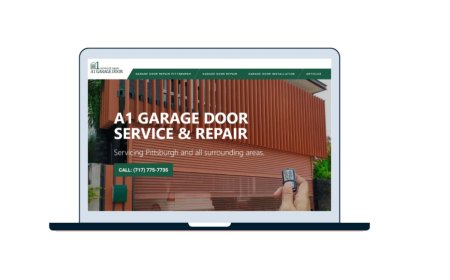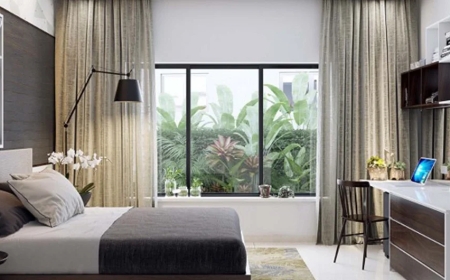Quick Tips for Finding Mold in Older Homes in Belmont
If you own or rent an older home in Belmont, follow these quick tips for finding mold and learn how to take action before it becomes a health or structural concern.

Introduction Why Older Homes in Belmont Are Vulnerable to Mold
Belmont, California is a charming city known for its hillside homes, quiet neighborhoods, and lush greenery. However, many homes in Belmont were built decades agobefore modern moisture barriers, HVAC systems, and insulation techniques. Combine that with the Bay Area's fluctuating humidity, and you've got a recipe forhidden mold growth.
If you own or rent an older home in Belmont, follow thesequick tips for finding moldand learn how to take action before it becomes a health or structural concern.
Tip #1 Trust Your Nose: Sniff Out Musty Odors
One of the easiest ways to detect hidden mold is by following your nose. Mold has adistinctive musty, earthy smell, especially in rooms with poor ventilation. If a room in your home smells damp even when it's clean, mold may be hiding behind the walls or under the floor.
Tip #2 Look for Water Stains and Wall Discoloration
Older homes often haveleaky pipes, old roofing, or poor waterproofing. Look around:
- Ceilings
- Baseboards
- Under windows
Brown, yellow, or black stains can signal long-term moisture intrusionan ideal condition for mold.
Tip #3 Check Underneath Carpets and Rugs
Wall-to-wall carpet or area rugs in older Belmont homes maytrap moisture. If youve had spills or noticed damp spots, lift the carpet in a corner and check the padding underneath. Mold often grows where the floor meets the wall.
Tip #4 Examine Basements, Crawlspaces, and Attics
These aremold hotspotsin any home, but especially in older ones with poor insulation or drainage. Look for:
- Condensation on pipes
- Rotting wood
- Peeling insulation
Use a flashlight to spot mold clusters or dark patches in low-light areas.
Tip #5 Investigate Behind Appliances and Cabinets
Plumbing leaks are acommon mold culpritespecially behind:
- Dishwashers
- Refrigerators
- Kitchen sinks
- Bathroom vanities
Check for dampness, soft spots, or discoloration on the walls or flooring near these fixtures.
Tip #6 Monitor Household Allergy Symptoms
Have you or your family been experiencing:
- Sneezing or coughing indoors
- Irritated eyes or skin
- Headaches or fatigue
If symptoms improve when you're outside the home, you may be breathing inairborne mold spores.
Tip #7 Look for Peeling Paint and Warped Surfaces
Mold can cause paint tobubble or peel, and wood towarp or swell. These subtle signs often indicate that moisture is trapped behind the surface, creating a perfect environment for mold to flourish.
Tip #8 Check Ventilation and Humidity Levels
Older Belmont homes often lack adequate ventilation in bathrooms, kitchens, or laundry rooms.Install exhaust fansor use ahumidity meterto ensure indoor levels stay below60%, the threshold where mold typically begins to grow.
Tip #9 Use a Flashlight to Spot Mold in Hidden Corners
Use a flashlight to inspect dark areas:
- Inside closets
- Under sinks
- Behind dressers pushed against walls
- Under stairs
Look for fuzzy, discolored, or sticky patches on drywall or wood.
Tip #10 When in Doubt, Call aCertified Mold Inspector
While these tips are a great starting point, they can't match the precision ofprofessional mold inspection. Hidden mold in older homes often requires specialized tools like:
- Moisture meters
- Thermal imaging cameras
- Air quality sampling pumps
For expert,unbiasedmold inspection and testing in Belmont, trustRick Bruce at Bay Area Mold Pros.
Why Belmont Homeowners Trust Bay Area Mold Pros
With decades of experience and a commitment tohonest reporting, Rick Bruce has helped homeowners throughout San Mateo County uncover hidden mold safely and affordably.
Unlike other services,Bay Area Mold Pros does not offer mold removal, so there'sno conflict of interestonly clear, professional results.
Whats Included in a $595 Inspection from Bay Area Mold Pros
- Full visual inspection of home
- Moisture and humidity mapping
- Air and surface sample collection
- Lab-certified analysis
- Detailedwritten reportwith findings and recommendations
- All for a flat rate of $595 no hidden fees
- Call(650) 762-6228
- Visitbayareamoldpros.com
FAQs Mold Detection in Belmont's Older Homes
Q1: Is it normal for older homes to have some mold?
Not necessarily. Mold can be harmful even in small amounts, especially when airborne.
Q2: Can I remove mold myself if I find it?
Only very small spots (under 10 sq ft) can be cleaned safely. Anything more requires professional assessment.
Q3: How do I know if the mold is dangerous?
Only alab testcan determine if its allergenic, pathogenic, or toxigenic.
Q4: How long does the inspection take?
Usually 12 hours, depending on the size of your home.
Q5: Are the results legally usable?
Yes. The report from Bay Area Mold Pros is suitable for real estate, tenant-landlord disputes, and insurance.
Q6: Will you try to sell memold remediation services?
No. Bay Area Mold Pros only performs inspections and testingno upselling.
Schedule Your Mold Inspection in Belmont Today
Dont wait for mold to spreadespecially in an older home where the damage could be hidden and costly.
- Call Rick Bruce at (650) 762-6228
- bayareamoldpros.com
- One Flat Rate: $595 No gimmicks, just expert insight
Conclusion Protect Your Older Home from Hidden Mold
If you live in an older home in Belmont, mold could be lurking in places you rarely check. By following thesequick tips for finding moldand scheduling aprofessional mold inspectionwithBay Area Mold Pros, you can catch small issues before they become big, expensive ones. Take the first step toward a healthier, safer home today.






































